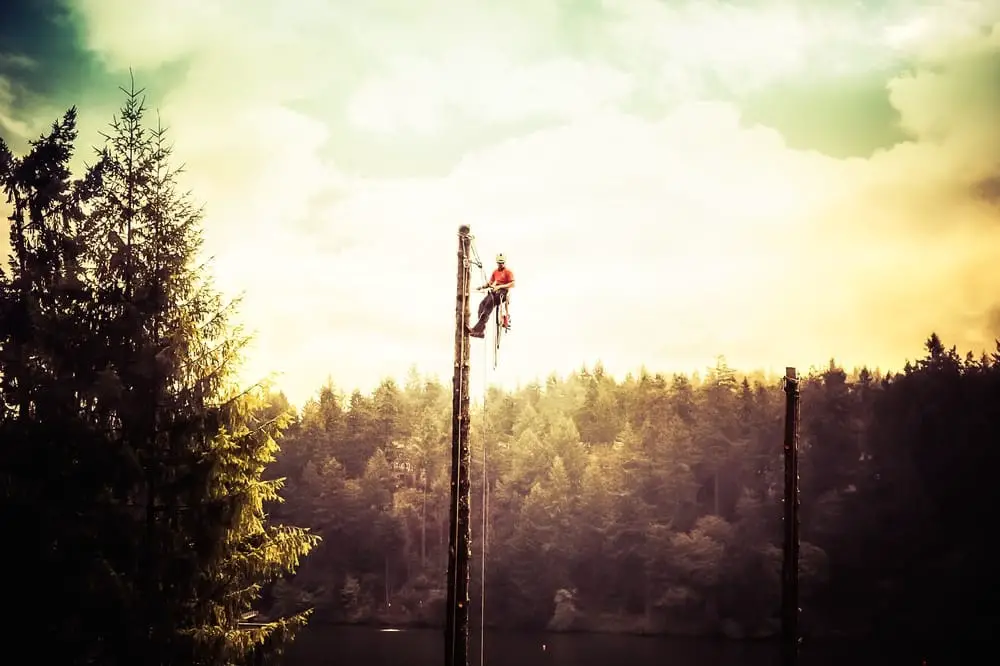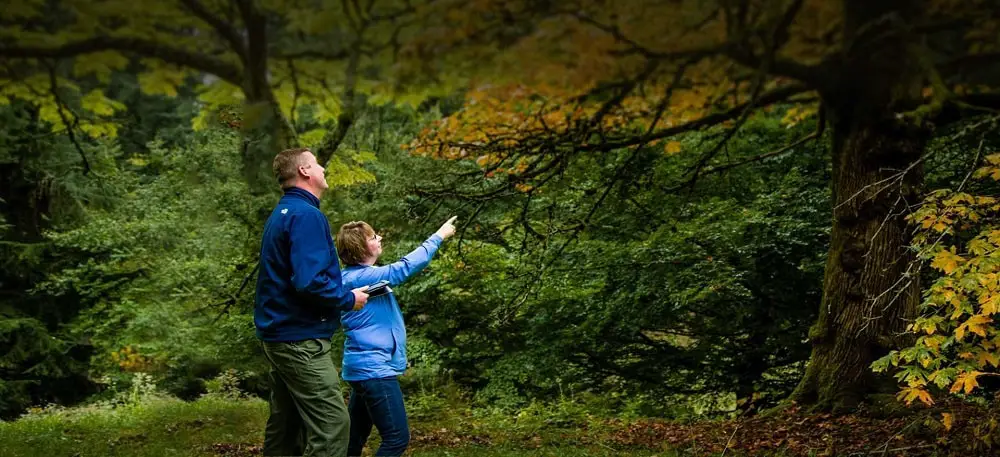Day in the life of
ISA-Certified Arborist – Lisa Tadewaldt

My Typical Day
When we started out, I was always in the field with other arborists, as we were establishing ourselves and hadn’t grown too large at that point. However, after 20+ years now, we have a large team and serve properties throughout the greater Portland area, so we’re busy! Whether it’s fire preventative measures, aesthetic improvements, or hazard removal, there’s no shortage in demand for our profession in the lush forests of the Pacific Northwest. This has me working in the office more than I used to, which often has me at my desk dealing with a myriad of issues having to do with trees.
A lot of my time is spent coordinating between the arborist who dictates the work that needs to be done, the arborist who does the work, and the arborist who gets the permits to do the work. Last and certainly very important, are the customers who own the trees and are entrusting us to solve their issues. So I work with customers throughout their journey to provide them with resources and insight. I still go onto job sites from time to time, but it’s no longer every day and all day. But, I have to admit, I’m fortunate and a bit of an exception to the rule. Most of the arborists and owner-peers I work with work solely in the field or 50/50 between office duties and fieldwork. I guess I’m just really good at the business management side and delegating after two decades.
Pros
The biggest pros of being an arborist are that every day is different and you get to work outside while being active. I would say these are the primary draws for most of us. We’re seeing new properties and wilderness settings each day, which are beautiful in their own right, but then we get to make it even better. I love that and have been known to get sentimental driving past a property we worked on years ago that has achieved our intended outcome. It’s really rewarding to help shape such a necessary part of modern society, being our green spaces and trees. Also, with trees being living things there is an endless amount of variety in the circumstances I encounter helping customers with their trees. Also due to the endless variety, I learn something new almost every day!
Cons
The cons are that because of the large number of circumstances I encounter I spend a lot of weekends in classes keeping my knowledge up to date. We take education and certification seriously here, so our Arborists are all ISA-Certified, which is through the International Society of Arboriculture. It’s rather uncommon to have multiple certified arborists on staff, let alone all of them, so that benchmark in our expertise takes a lot of work to maintain and keep active.
Also, depending on your primary role in the sector, such as being a Climbing Arborist or helping with hauling and removal, it can get taxing on your knees, back, and shoulders. That being said, no one has gym memberships and we’re all relatively fit, so that’s a good trade-off for the physical nature of the role.
Advice to aspiring Arborists
The biggest thing that has surprised me about candidates thinking about working in arboriculture is they often don’t understand the career and income trajectory you can achieve in our industry. We’ll often see young people who are currently working in a “dead-end job” in such industries as retail, hospitality, food services, or warehousing show interest in becoming an arborist but balk at the last minute. They’ll often exclaim that they want to work outdoors and in arboriculture, but they don’t see the light at the end of the tunnel, per se. As an example, our starting wage is similar to established wages in the previous industries, but unlike retail and whatnot, you’re almost certain to double your income in 2-3 years with tree service companies. Conversely, a lot of those roles in more accessible industries cap out around our starting wages. Sure, in the very short term, both tasks and careers will earn you around the same income, but even in the first 6 to 12 months, we raise our worker wages by 30%! This is because we have to perform on-the-job training in more depth than those other sectors, so that’s where we have to compensate for that training. But once your training is complete and you can be working with our teams, we quickly start increasing your income and it only goes up from there. You can make a solid living in arboriculture, it just takes learning the trade first, and after that, you can expand your skillsets, enter into leadership, or even start your own business. It’s because of this that I often encourage those candidates looking into this to think of it as a marathon and not a sprint.
Additionally, becoming an arborist doesn’t require a traditional college education, so you won’t’ have student loan obligations or 2-4 years of balancing school with life. Your “education” will be your initial training and then continued education as you like, which is almost always covered by your employer. So long as you can learn the ropes upfront, you’ll be making a good living outdoors for years to come!
Tree Trimmers and Pruners
using sophisticated climbing and rigging techniques, cut away dead or excess branches from trees or shrubs to maintain right-of-way for roads, sidewalks, or utilities, or to improve appearance, health, and value of tree. Prune or treat trees or shrubs using handsaws, hand pruners, clippers, and power pruners. Works off the ground in the tree canopy and may use truck-mounted lifts.





.jpg)